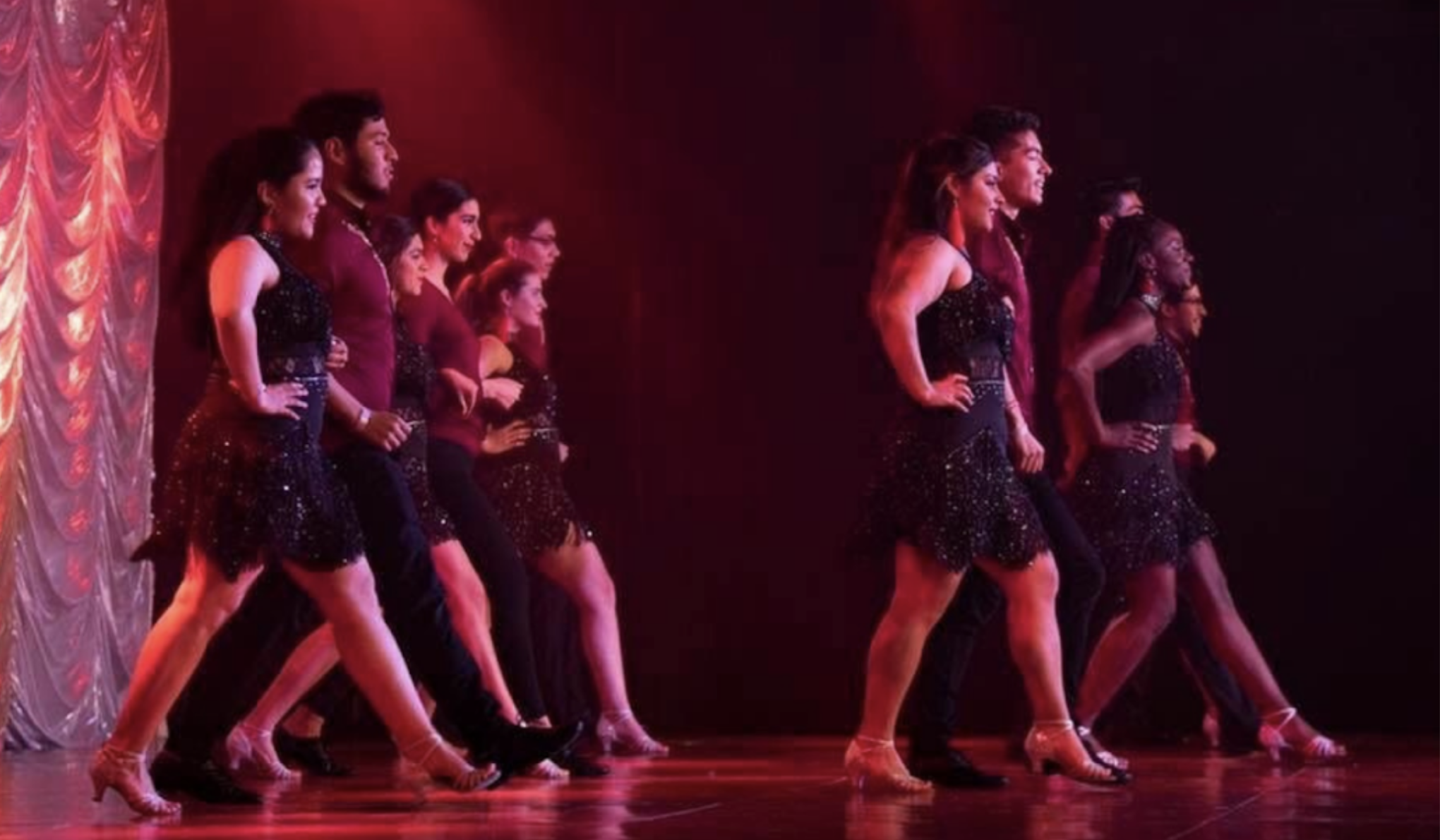A guitar twanged a high-pitched arpeggio, crying an almost tragic complement to the smooth voice crooning a love story. Underneath, a bongo beat out an energized, agile rhythm; the bass guitar traversed the three-note bassline.
When the bachata dancers took the stage, it was this last instrument that drove the constant motion of their feet. It informed a one-two-three-stop pattern that belies all the dances, from the countless partner turns to the full-group dance break in the middle. The members mainly danced in lead-follow pairs; leads expertly guided their follows through an elaborate series of turns and dips, maintaining their handheld contact all the while.
This is Ritmo de Stanford, the sole non-audition Latin dance group on campus. Members learn choreography primarily in the genre of bachata, a form of partner dance originating in the Dominican Republic. According to co-president Alexis Perez ’23, Ritmo was started in 2017 by members of Los Salseros, Stanford’s more selective audition salsa group. As Perez explained that in Latin social dance circles, bachata and salsa are the two most popular music styles.
Dance figures prominently across Latin American cultures as a customary part of any social gathering. From standard birthday parties to milestone celebrations such as quinceañeras and weddings, few functions would be complete without song and dance. Today, bachata is securely situated within this cultural core of Latinx social dance. Its current widely-loved form has been stylistically influenced by pop music, but at its inception, bachata was a far more acoustic art form originating from the rural Dominican countryside. The notoriously cruel Dominican dictator Rafael Trujillo censored the genre, labeling bachata as vulgar, low-class music and claiming it had no place in a modern society.
Despite this classist stigmatization, the contemporary form of bachata came to flourish in the decades following Trujillo’s assassination. The genre blossomed abroad, across Latinx communities and even found a home on Stanford’s campus, where its irresistibly melancholic sounds drew eager dancers to Ritmo: striding feet and swaying hips at the ready.
Ritmo’s dance workshops are catered to casual, curious learners; to formally join, prospective members only need to attend weekly practices. Club leadership uses guidance from outside choreographers to realize their vision for the performance choreography. The roughly 30 active members break into smaller groups to perform this quarter’s composition — a dance to Prince Royce’s “Carita de Inocente” — at events such as Dv8’s Encounter Culture and the Flor y Canto showcase hosted by Casa Zapata.
Ritmo’s non-audition entry process came with its drawbacks; Perez said that “although we do take attendance, given our less strict requirements to join, we usually have a few members decide to drop around mid-term season given their increasingly busy schedules. This dropping can get in the way of choreographing and community building.”
Still, forgoing auditions helps Ritmo make Latin dance “accessible to the people who truly care to learn it,” said co-president Yesenia Ulloa ’22. In her opinion, the slower pace of bachata also makes it easier to learn, as compared to the salsa dancing that the audition group specializes in. The club’s more committed members “stay curious and help each other navigate through choreography, and as with any community, the relationships extend outside of the context of the club,” said Ulloa.
Ulloa stressed the relevance of this community in her personal experience with Ritmo. Attending her first Ritmo workshop sophomore year, Ulloa discovered what would be a creative outlet away from the stress of “projects, midterms, essays.” Committing to the club brought a sense of community she’d struggled to find during her freshman year.
Erik Luna ’23 echoed her sentiments about community, adding that he loves the learning aspect of Ritmo. Despite starting as a complete beginner, Luna quickly developed an affinity for the genre as a form of creative expression. He has grown to “feel comfortable inviting strangers to social dance,” and even led the group through some of last quarter’s choreography.
In the past two years COVID-19 restrictions have put a damper on Ritmo’s operations. According to Perez, the 2019-20 leadership made the difficult decision not to continue over the pandemic school year; the importance of partner dance made virtual alternatives particularly unsuitable for the bachata group. Then, coming back to campus, this break in leadership meant that “it was a bit challenging re-starting Ritmo and planning for the academic year.”
The club is returning to full operations slowly but surely. For one, Ulloa mentioned an upcoming workshop with the queer-focused and Dominican-ran Lak’ech Dance Academy. In pre-pandemic times Ritmo members also had the opportunity to travel to social dance events off campus and meet new people.
For both co-presidents, joining Ritmo was also about discovering new forms of self-expression. Whereas verbal communication doesn’t come as naturally to Ulloa, she says, “Learning to dance bachata has been such a beautiful experience for me because I have found a new way to communicate, express myself.”
As for Perez, ever since he started in freshman fall, “dance has grown to be an activity that helps me connect with others, express my emotions, feel more present and be happy to be alive.”
Ritmo offers members a community in which to experiment with creativity in movement and dance. Although bachata has mutated from its initial form, it retains its fundamentally social context and continues to act as an expressive outlet.
The group recruits at the start of each quarter; interested students can refer to Ritmo’s spring recruitment form.
